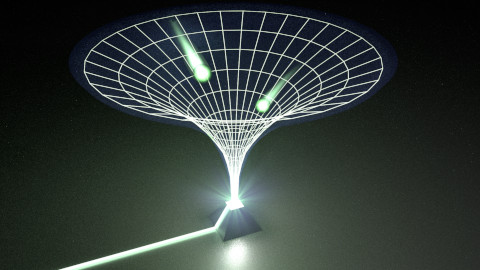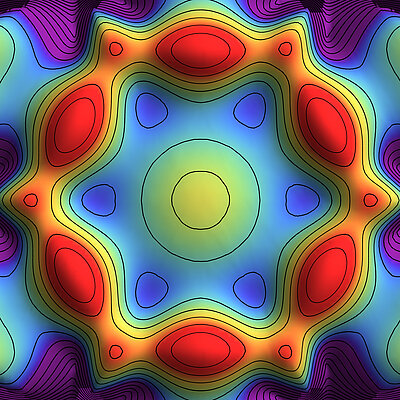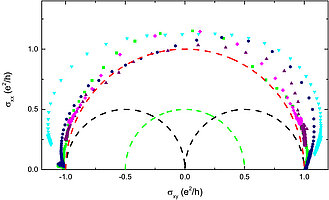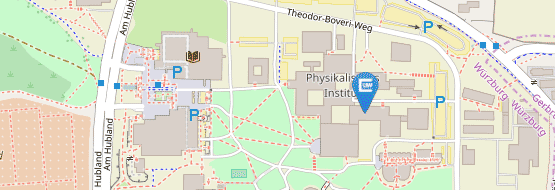Recent Research Topics
Nachfolgend finden Sie 3 ausgewählte aktuelle Forschungsthemen.
Topological funneling of light

Dissipation is a general feature of non-Hermitian systems. But rather than being an unavoidable nuisance, non-Hermiticity can be precisely controlled and hence used for sophisticated applications, such as optical sensors with enhanced sensitivity. In our work, we implement a non-Hermitian photonic mesh lattice by tailoring the anisotropy of the nearest-neighbor coupling. The appearance of an interface results in a complete collapse of the entire eigenmode spectrum, leading to an exponential localization of all modes at the interface. As a consequence, any light field within the lattice travels toward this interface, irrespective of its shape and input position. On the basis of this topological phenomenon, called the “non-Hermitian skin effect,” we demonstrate a highly efficient funnel for light.
Local magnetic moments in iron and nickel at ambient and Earth’s core conditions

Some Bravais lattices have a particular geometry that can slow down the motion of Bloch electrons by pre-localization due to the band-structure properties. Another known source of electronic localization in solids is the Coulomb repulsion in partially filled d or f orbitals, which leads to the formation of local magnetic moments. The combination of these two effects is usually considered of little relevance to strongly correlated materials. Here we show that it represents, instead, the underlying physical mechanism in two of the most important ferromagnets: nickel and iron. In nickel, the van Hove singularity has an unexpected impact on the magnetism. As a result, the electron–electron scattering rate is linear in temperature, in violation of the conventional Landau theory of metals. This is true even at Earth’s core pressures, at which iron is instead a good Fermi liquid. The importance of nickel in models of geomagnetism may have therefore to be reconsidered.
Scaling of the Quantum Anomalous Hall Effect as an Indicator of Axion Electrodynamics

We report on the scaling behavior of V-doped (Bi,Sb)2Te3 samples in the quantum anomalous Hall regime for samples of various thickness. While previous quantum anomalous Hall measurements showed the same scaling as expected from a two-dimensional integer quantum Hall state, we observe a dimensional crossover to three spatial dimensions as a function of layer thickness. In the limit of a sufficiently thick layer, we find scaling behavior matching the flow diagram of two parallel conducting topological surface states of a three-dimensional topological insulator each featuring a fractional shift of 12e2/h in the flow diagram Hall conductivity, while we recover the expected integer quantum Hall behavior for thinner layers. This constitutes the observation of a distinct type of quantum anomalous Hall effect, resulting from 12e2/h Hall conductance quantization of three-dimensional topological insulator surface states, in an experiment which does not require decomposition of the signal to separate the contribution of two surfaces. This provides a possible experimental link between quantum Hall physics and axion electrodynamics.


